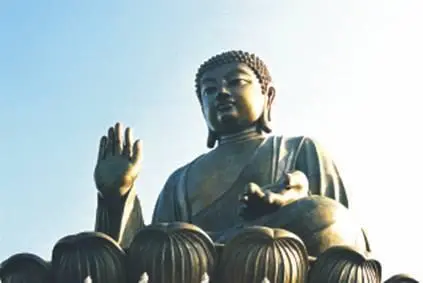Simon Foster - CHINA's Three Gorges & Xi'an
Здесь есть возможность читать онлайн «Simon Foster - CHINA's Three Gorges & Xi'an» весь текст электронной книги совершенно бесплатно (целиком полную версию без сокращений). В некоторых случаях можно слушать аудио, скачать через торрент в формате fb2 и присутствует краткое содержание. Год выпуска: 2010, Издательство: Hunter, Жанр: Старинная литература, на английском языке. Описание произведения, (предисловие) а так же отзывы посетителей доступны на портале библиотеки ЛибКат.
- Название:CHINA's Three Gorges & Xi'an
- Автор:
- Издательство:Hunter
- Жанр:
- Год:2010
- ISBN:нет данных
- Рейтинг книги:4 / 5. Голосов: 1
-
Избранное:Добавить в избранное
- Отзывы:
-
Ваша оценка:
- 80
- 1
- 2
- 3
- 4
- 5
CHINA's Three Gorges & Xi'an: краткое содержание, описание и аннотация
Предлагаем к чтению аннотацию, описание, краткое содержание или предисловие (зависит от того, что написал сам автор книги «CHINA's Three Gorges & Xi'an»). Если вы не нашли необходимую информацию о книге — напишите в комментариях, мы постараемся отыскать её.
CHINA's Three Gorges & Xi'an — читать онлайн бесплатно полную книгу (весь текст) целиком
Ниже представлен текст книги, разбитый по страницам. Система сохранения места последней прочитанной страницы, позволяет с удобством читать онлайн бесплатно книгу «CHINA's Three Gorges & Xi'an», без необходимости каждый раз заново искать на чём Вы остановились. Поставьте закладку, и сможете в любой момент перейти на страницу, на которой закончили чтение.
Интервал:
Закладка:
Variously feared, ignored, persecuted and condescended to through history, the minority groups' biggest threat today comes from the migration of its youth to the big cities. During the early years of communism in China, there seemed little hope for minority groups and their culture, but these days the Chinese are much more curious about their other countrymen. Guesthouses, hiking and witnessing traditional life have all become big sellers and are, to some extent, helping to preserve minority cultures. And if you head off the beaten track (even just a few days in the valleys behind Longji) you'll find communities seemingly untouched by time where cultural traditions have been maintained for centuries. You can help preserve these traditions by buying goods made in the villages, asking for regional specialty foods and using local guides.
Religion & Philosophy

China's history is steeped in overlapping religious belief and philosophy. Starting with animist worship, religion developed through Taoismand Confucianism, the latter of which, with its hierarchical code of moral values, was more a philosophy than a religion. Outside influence brought Buddhismto the country and together these three belief systems are the foundation of religion in China – known as The Three Teachings. With the onset of communism, socialism was the new doctrine; religion in all its forms was suppressed and only practiced secretly. In the last 20 years, however, religion has reemerged, albeit in party-approved form and far from free. Indeed, several religious groups are outlawed in China, such as Falun Gong (meaning Wheel of Life, a quasi-Buddhist order), but they flourish in Hong Kong and Taiwan. The Three Teachings remain the most prominent beliefs in modern China, although some would argue they come second to capitalism, albeit with socialist characteristics! Christian missionariesand Muslim merchantshave also had their parts to play in China's religious history, with the result that today most cities of any size have both churches and mosques to serve their sizeable Christian and Muslim populations. It is difficult to gauge the actual size of these groups, as only "official” religions are included in statistics, meaning that the millions who worship in secret according to other doctrines aren't counted. Although there are still devout followers of each of the Three Teachings, belief among the populace can seem ambiguous and Taoist temples can show elements associated with Buddhism and vice versa.
Buddhism
Though Indian in design and containing elements of Hinduism, like so many outside influences that reached China, Buddhism was adopted and adapted to fit Chinese beliefs and needs. Aspects of Buddhist dharma could be likened to Taoism and the fact that Buddhism didn't outlaw recognition of other gods allowed it to incorporate facets of traditional folk religions, and to prosper in China.
History in China

White Horse Temple
Buddhism came to China in 67 AD, and the first Buddhist place of worship is believed to have been the White Horse Templein Luoyang, Shandong province, founded in 68 AD, by two Indian monks who arrived on a white horse. However, the religion only really gained popularity after the arrival of Bodhidharma, an Indian monk who is said to have journeyed to Shaolin Templein the fifth century and is also credited with the development of Chinese martial arts. The Tang dynasty was Buddhism's great era in Chinese history and monks numbered in the hundreds of thousands. It was also during this period that China's great Buddhist cave art flourished, most spectacularly at Longmennear Luoyang in Shandong province, at Dunhuangin Gansu province and at Dazuin Szechuan province.
Life of Sakyamuni
Buddhism is a religion borne of Sakyamuni, a Nepali prince, also known as Siddhartha Gautama. Having been sheltered from the harsh realities of life by living within a palace, Siddhartha was shocked by his first glimpses of the outside world and renounced his earthly possessions in the search for release from the earthly cycle of life, death and re-birth. After several years as an ascetic, Sakyamuni realized that physical vigilance in the form of fasting, contortion and the like were not the answer. Finally he achieved nirvana (enlightenment) under the bodhi tree in Bodhgayain Bihar, India, and became Buddha (the Enlightened One), though he never claimed to be anything more than a man. He then gave sermons at Sarnath on the banks of the Ganges, where he spoke of realizing the existence of suffering and finding the dharma , or path to enlightenment, through meditation and giving up the desire for all worldly things. Sakyamuni spent the remainder of his life traveling around the Ganges floodplains in northeastern India, teaching and receiving visitors.

Sakyamuni
Basics of Buddhism
Buddhism is based on realization of the Four Noble Truths: Life means Suffering; The Origin of Suffering is Attachment; The Cessation of Suffering is Attainable; and The Path to the Cessation of Suffering. The way to achieve enlightenment is detailed in the Eightfold Path. Pinning down exactly what enlightenment constitutes is a tricky one, but could be described as an omniscience of all beings, in all their lives, the consequences of their actions and thus the symbiosis inherent in the cosmos!
Schools of Buddhism

Yellow Hat monks
Buddhism has many forms, the most significant of which are mahayana (Greater Vehicle), as practiced in China, and theravada (Lesser Vehicle), prominent in Southeast Asia. Theravada is the version which originally arrived in China, but its focus on gaining nirvana as an individual had little hold with the regimented group mentality prominent in the Middle Kingdom. Thus, mahayana , which indicated that release could only come as a whole, and that arhats (known in China as luohan ) and bodhisattvas (enlightened beings who choose to stay on earth) would remain on this earth to guide others, was far more suited to China. Over time, bodhisattvas and arhats came to be worshipped themselves and local deities were brought into the fold.
Chan ( Zen ) Buddhism, a school of meditation, also found its feet in China and has gained standing around the world, facilitated by its belief that you don't have to be a monk or recluse to achieve enlightenment. Tibet also managed to absorb Buddhism into its pre-existing shamanistic religion, Bon , greatly aided by Guru Rinpoche, an Indian Buddhist, who was invited to the kingdom in the seventh century. The various Tibetan Buddhist schools are collectively known as Lamaism, of which Gelugpa (or Yellow Hat) is the most prominent today and includes the Dalai Lama and the Panchen Lama among its following.
Confucianism
Читать дальшеИнтервал:
Закладка:
Похожие книги на «CHINA's Three Gorges & Xi'an»
Представляем Вашему вниманию похожие книги на «CHINA's Three Gorges & Xi'an» списком для выбора. Мы отобрали схожую по названию и смыслу литературу в надежде предоставить читателям больше вариантов отыскать новые, интересные, ещё непрочитанные произведения.
Обсуждение, отзывы о книге «CHINA's Three Gorges & Xi'an» и просто собственные мнения читателей. Оставьте ваши комментарии, напишите, что Вы думаете о произведении, его смысле или главных героях. Укажите что конкретно понравилось, а что нет, и почему Вы так считаете.












